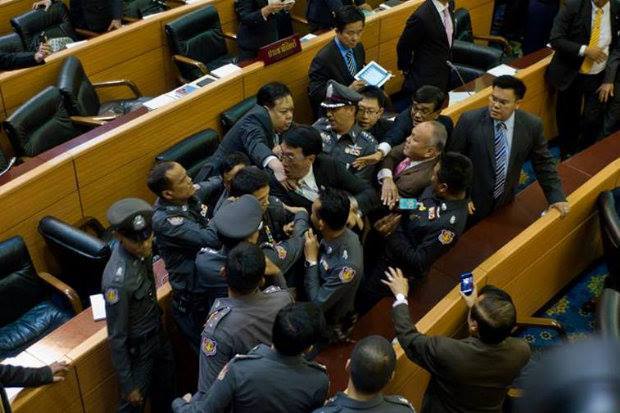
BANGKOK — As proof of how volatile Thai political history is, the House of Parliament building is shutting down today for good after 44 years as the seat of the kingdom’s democracy.
The facility is being returned to the palace, and a new parliament building is under construction several kilometers away. The move marked the end of the site, which has witnessed its share of passionate debates, fistfights and even some casual pornography viewing.
These are some of the highlights of that soon-to-be history.
A Permanent Home
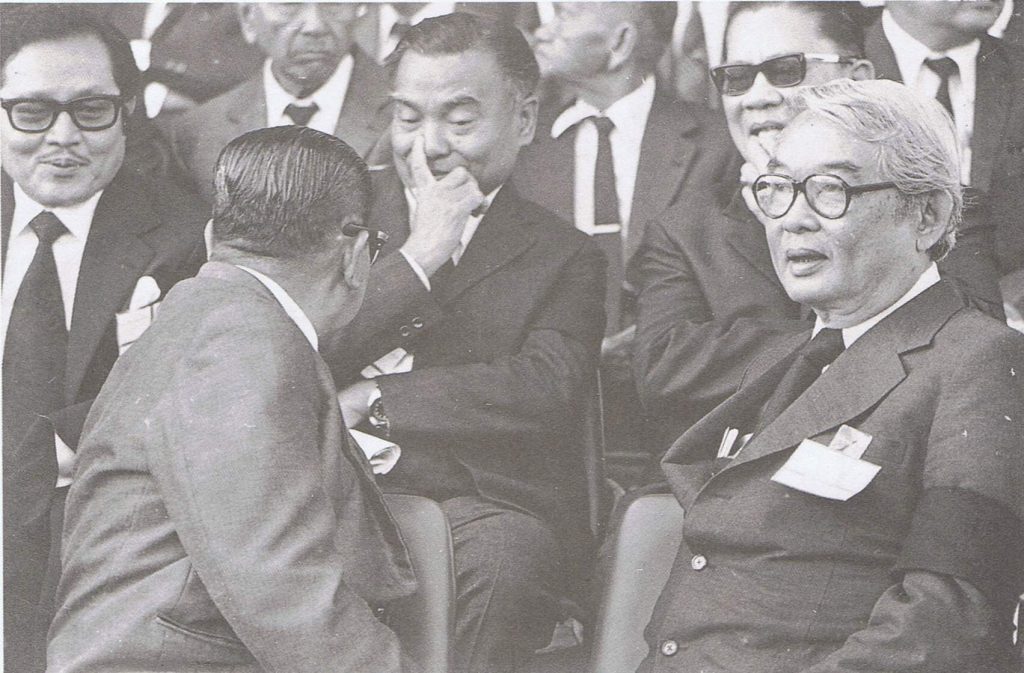
Construction of the parliament building began in 1969. Prior to that, the legislative branch had met in the Ananta Samakhom Throne Hall for its sessions, but a growing Thai population – which meant more representatives – forced lawmakers to find a new home.
Not that it mattered much, however: Thailand was ruled by a military dictatorship at the time, which did away with the parliament and its hassle of checks and balances.
But a popular uprising two years later brought back the parliament. Meetings were held at the Royal Turf Club before moving to the parliament after construction completed in 1974.
Taking a Stand
Thai politicians weren’t exactly known for their courage or as role models for democracy, but that changed in May 1992. Gen. Suchinda Kraprayoon, who led a coup the previous year, rigged a way to win the premiership, despite having pledged never to do so.
Opposition politicians decided they’d had enough. They showed up dressed in black to mock Suchinda, booed him when he tried to address the House and walked out in protest. Some would later join a growing protest against his rule.
The protest escalated into three days of violence known as Black May, which left at least 50 people dead and Suchinda tendering his resignation.
Pornocracy
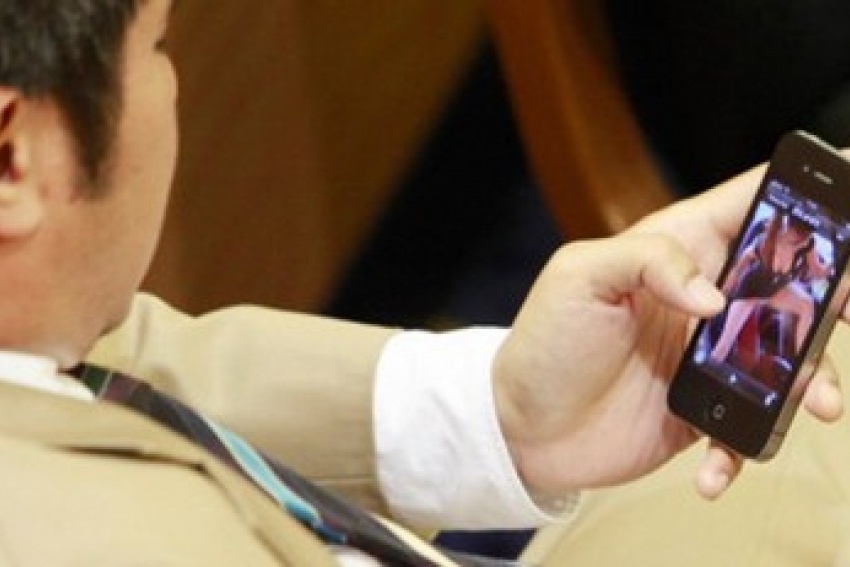
But what many people will remember the most about the parliament’s history might be the times sex erupted on the floor.
In 2012, Democrat MP Nat Bantadtan was spotted scrolling through NSFW pics on his phone during a debate. Not to be outdone, Pheu Thai MP Pongpan Sunthornpan was caught doing the same on his iPad a year later.
Then there was that one time in April 2012 that some prankster got a screenshot of Japanese AV porn projected onto the big screen during an active legislative session. The person responsible was never caught.
‘Mr. Speaker, I Protest!’
And what’s a parliament without the frequent debates punctuated by insults, alleged misconduct and screaming challenges? Shouting matches are often interrupted by members of the belligerent parties standing up and protesting to the House Speaker, whose miserable job involves keeping order.
Fun fact: The parliament cafeteria for MPs is nicknamed the “U.N. Room” because courtesy holds that lawmakers must put aside their feuds and lunch together in peace.
Resisting the System
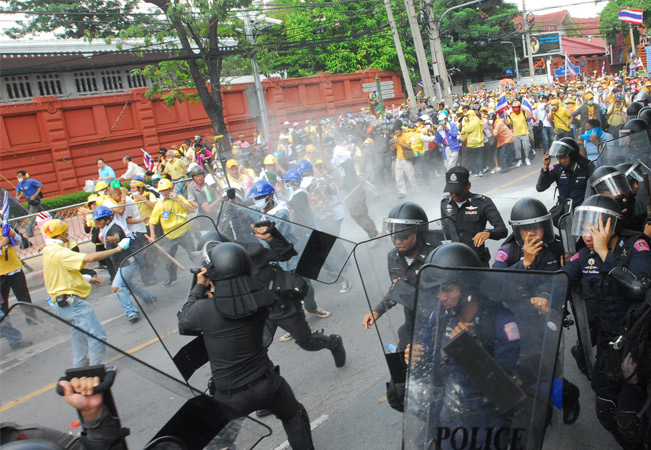
As the place where the laws get made, the parliament attracts many protests.
One group of activists stormed the building in 2007 to protest the interim lawmakers appointed by the junta at the time. The protesters climbed the wall, rushed inside and nearly pushed through the doors into to the main hall before police stopped them.
A year later, Yellowshirt protesters blocked the entrance to the building to stop politicians allied to former PM Thaksin Shinawatra from going to work. The government responded by ordering police to fire teargas into the crowd. The resulting chaos left two people dead.
Fighting in the War Room
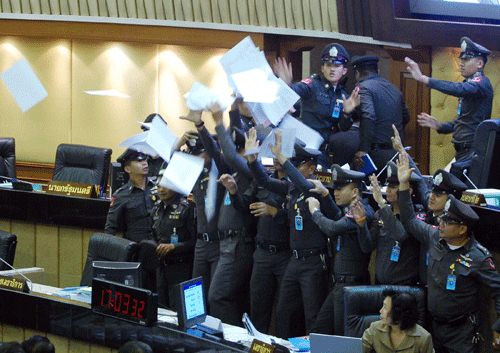
The most spectacular parliament debate took place in 2012 when the government of Yingluck Shinawatra attempted to pass amnesty for protesters caught up in the 2010 political violence in which more than 90 people were killed.
Democrat MPs vehemently resisted the effort, accusing Yingluck of trying to sneak in amnesty for her brother, who was convicted of corruption. Fistfights broke out and Democrats tried to mob the House Speaker, who called for police backup.
But eventually the Dems were proven right. In a stealthy session held in the dead of the night in November 2013, Pheu Thai passed a blanket amnesty bill that would include Thaksin Shinawatra. The resulting outrage ignited street protests that would culminate in the May 2014 coup d’etat.
Rubber Stamp
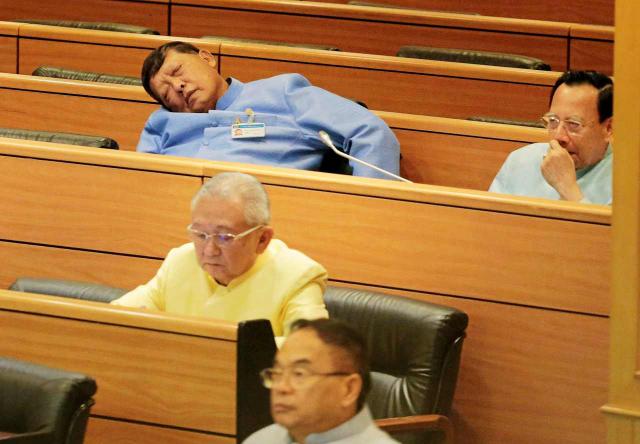
It’s been nearly five years since Thailand had elected representatives. In their place, the junta appointed its own interim lawmakers, who have done little more than unanimously approve whatever bills the government has sent their way.
Critics also fear that the laws passed under the interim parliament – more than 300 of them – lacked debate and transparency, leaving potential legislative landmines to be dealt with for years to come.














































